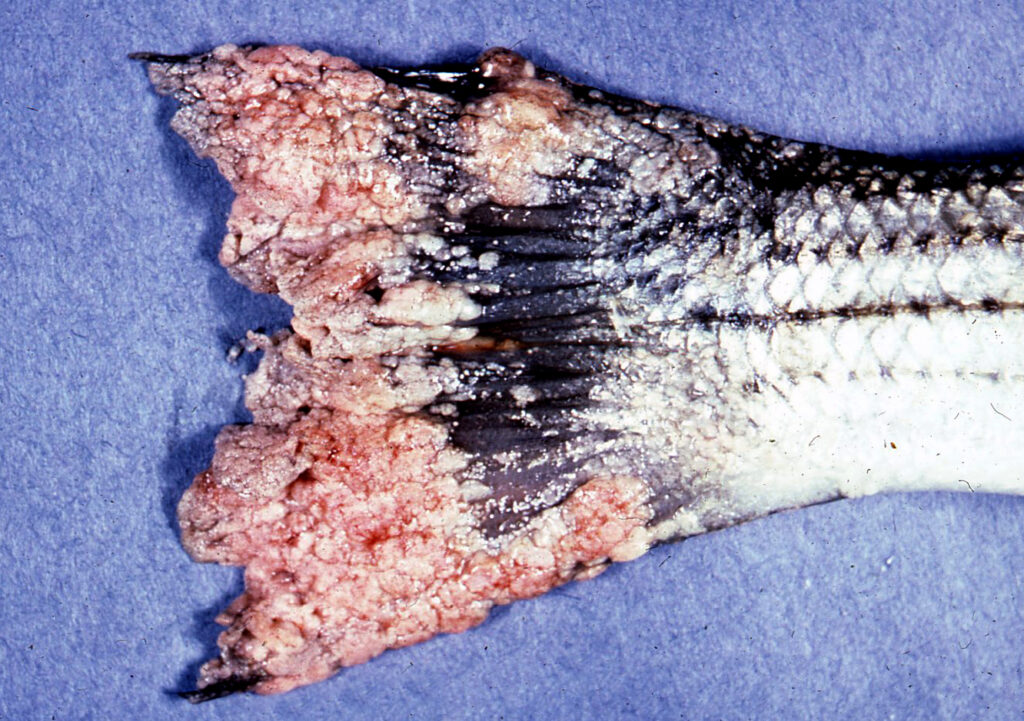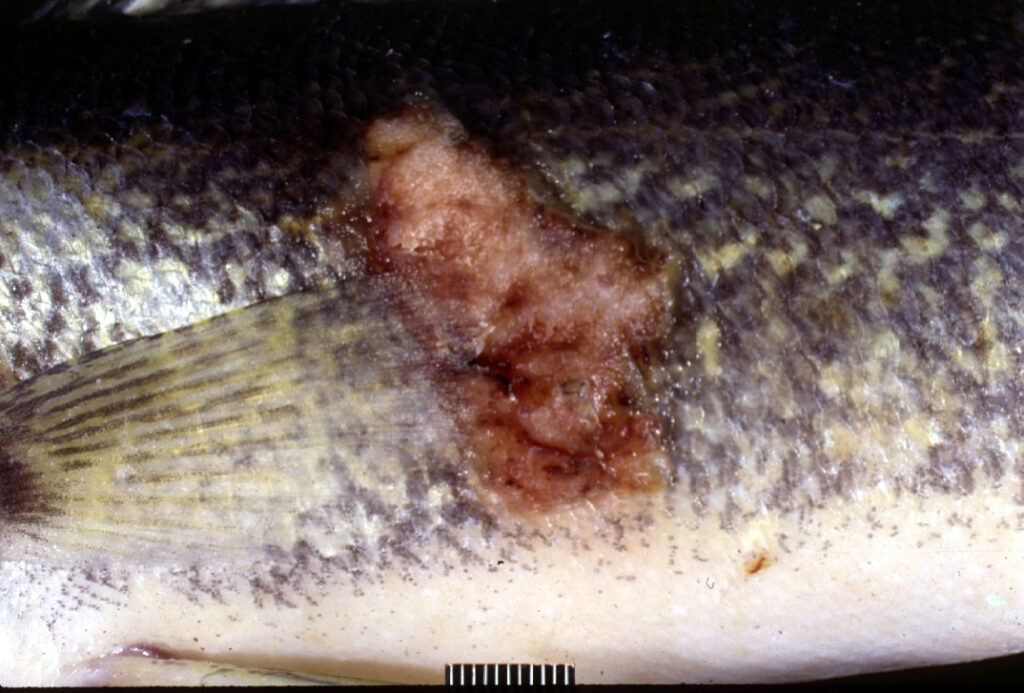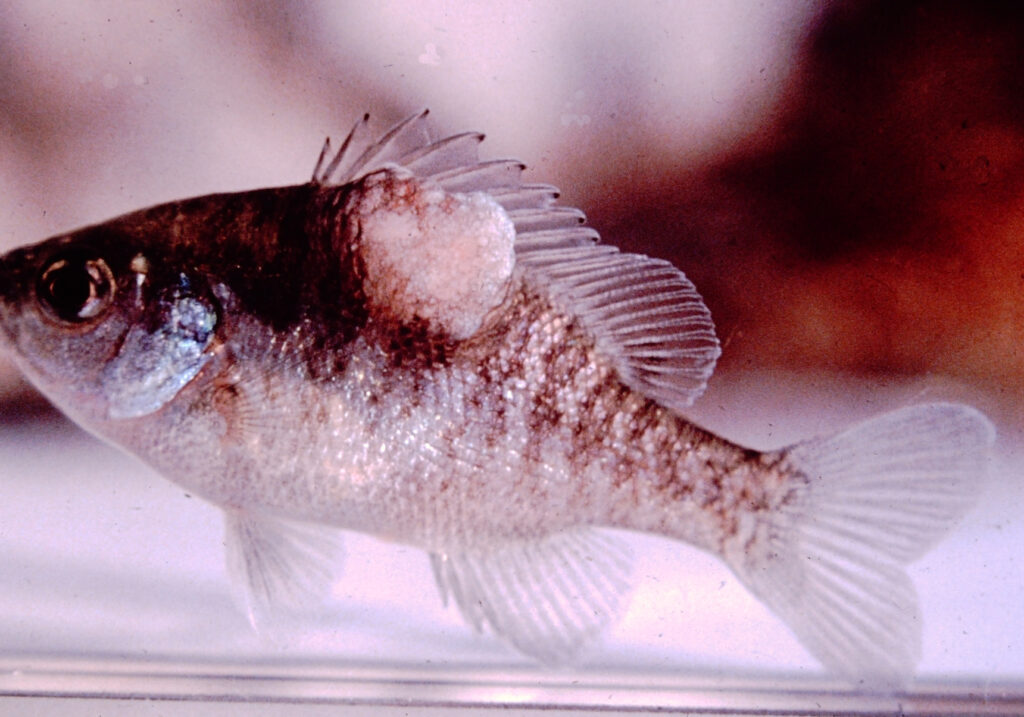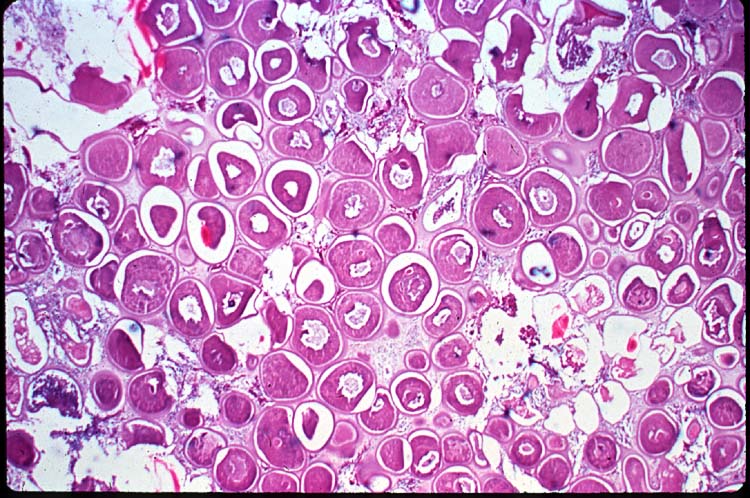Today’s path rounds are on 𝐥𝐲𝐦𝐩𝐡𝐨𝐜𝐲𝐬𝐭𝐢𝐬!
𝐖𝐡𝐚𝐭 𝐢𝐬 𝐢𝐭?
𝐋𝐲𝐦𝐩𝐡𝐨𝐜𝐲𝐬𝐭𝐢𝐬 is a viral infection that produces large, cauliflower-like masses on the skin of fish. In fact, it is the most common viral infection of aquarium fish!
𝐖𝐡𝐨 𝐠𝐞𝐭𝐬 𝐢𝐭?
This disease affects some species of 𝐭𝐞𝐥𝐞𝐨𝐬𝐭 fish, which are the ray-finned fish. Both freshwater and marine species are affected!
𝐖𝐡𝐚𝐭 𝐜𝐚𝐮𝐬𝐞𝐬 𝐢𝐭?
As mentioned, this is a viral infection, caused by a type of 𝐢𝐫𝐢𝐝𝐨𝐯𝐢𝐫𝐮𝐬 called 𝐋𝐲𝐦𝐩𝐡𝐨𝐜𝐲𝐬𝐭𝐢𝐯𝐢𝐫𝐮𝐬. There are many different viruses within this family, with each identified virus affecting different groups of fish species. It is believed that the virus is transmitted when the masses rupture or shed cells, releasing the virus into the water, where it attaches to and infects other fish in the area.
𝐖𝐡𝐲 𝐢𝐬 𝐭𝐡𝐢𝐬 𝐚 𝐩𝐫𝐨𝐛𝐥𝐞𝐦?
Thankfully, this disease is considered 𝐬𝐞𝐥𝐟-𝐥𝐢𝐦𝐢𝐭𝐢𝐧𝐠, meaning that it won’t continue to develop or cause additional problems in the fish. In some cases, the masses may eventually disappear entirely. However, the masses caused by lymphocystis can be quite disfiguring, and make the fish look ugly. No one wants to buy an ugly fish, so often this disease is only problematic in terms of economics!
𝐇𝐨𝐰 𝐢𝐬 𝐢𝐭 𝐝𝐢𝐚𝐠𝐧𝐨𝐬𝐞𝐝?
Often the veterinarian will suspect this disease just based on how it looks, however to confirm the diagnosis 𝐡𝐢𝐬𝐭𝐨𝐥𝐨𝐠𝐲 (looking at the tissue under the microscope) needs to be performed. On histology, the pathologist will see huge 𝐟𝐢𝐛𝐫𝐨𝐛𝐥𝐚𝐬𝐭𝐬 (cells that produce fibrous tissue) that contain 𝐢𝐧𝐜𝐥𝐮𝐬𝐢𝐨𝐧 𝐛𝐨𝐝𝐢𝐞𝐬. These inclusion bodies are actually aggregates of proteins that the virus has produced!
𝐇𝐨𝐰 𝐢𝐬 𝐢𝐭 𝐭𝐫𝐞𝐚𝐭𝐞𝐝? 𝐇𝐨𝐰 𝐢𝐬 𝐢𝐭 𝐩𝐫𝐞𝐯𝐞𝐧𝐭𝐞𝐝?
Unfortunately there is no treatment for lymphocystis. Fish keepers will often isolate affected fish from the others to prevent spread of the disease. Prevention of the disease typically involves maintaining good hygiene and keeping a low stress environment.
𝐏𝐡𝐨𝐭𝐨𝐬
1-5) Examples of fish with lymphocystis lesions.
6) What lymphocystis looks like under the microscope!
𝐒𝐨𝐮𝐫𝐜𝐞𝐬
Noga, EJ. Fish Disease: Diagnosis and Treatment. 2010.
Photos 1-6 © Noah’s Arkive contributors King, Jakowski, Metro, Render, Wolfe licensed under CC BY-SA 4.0.










